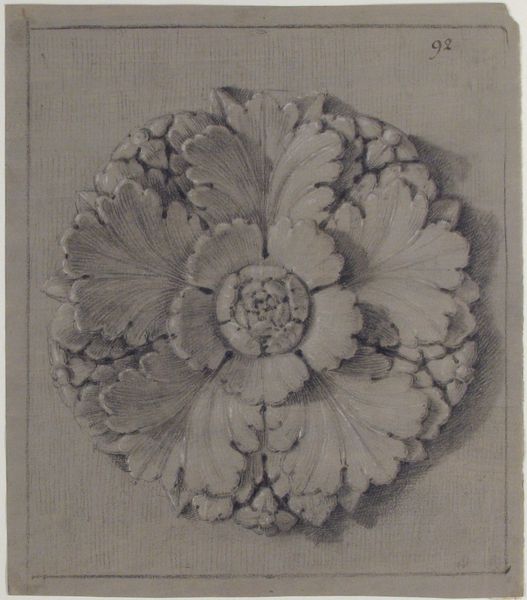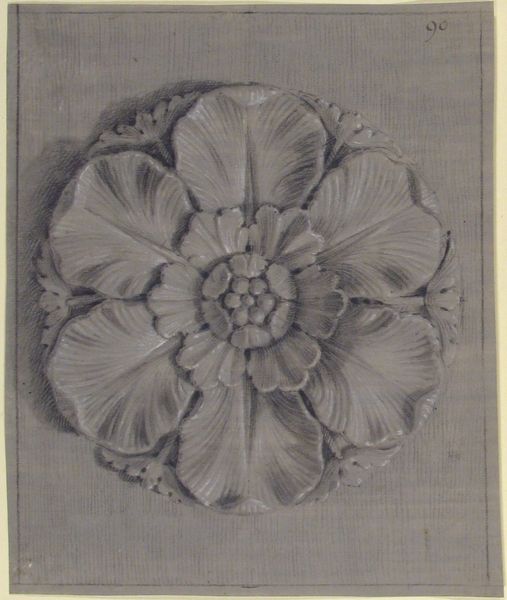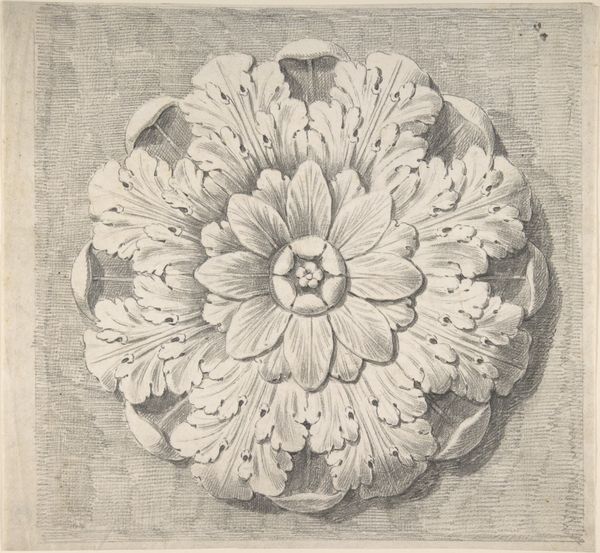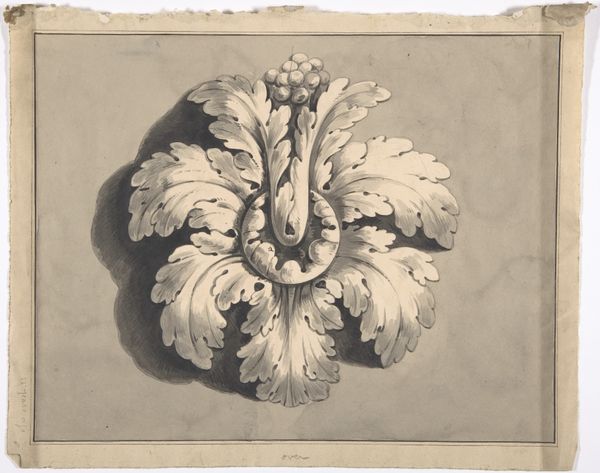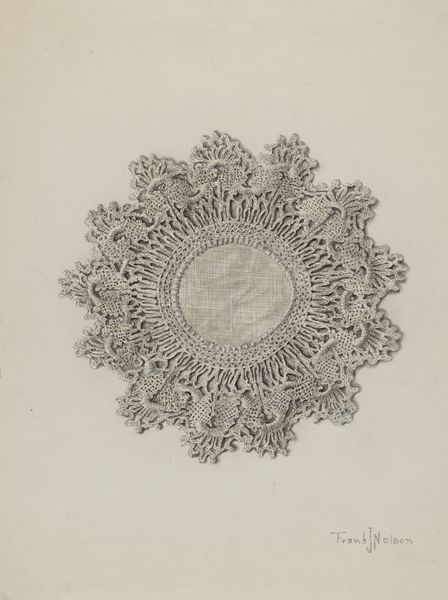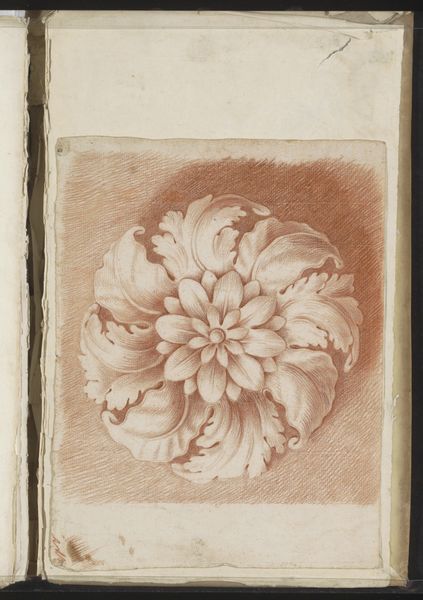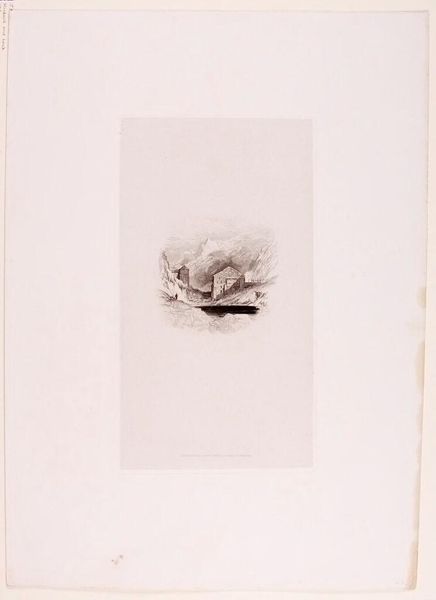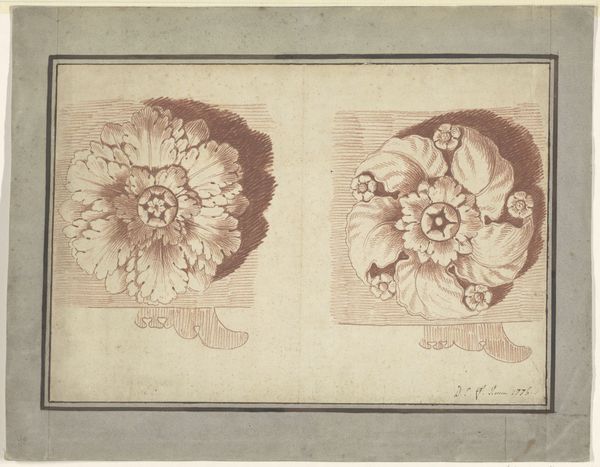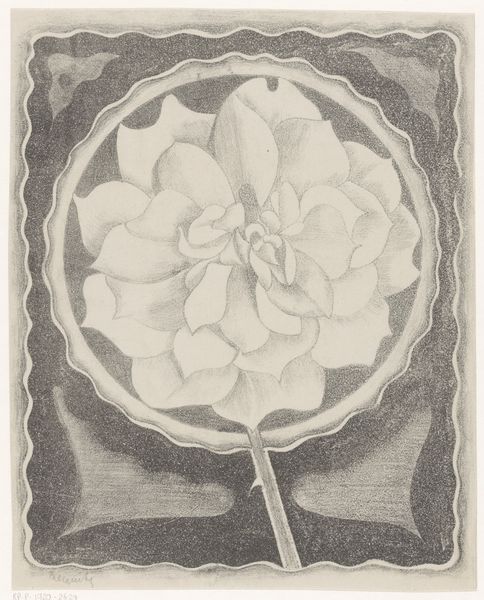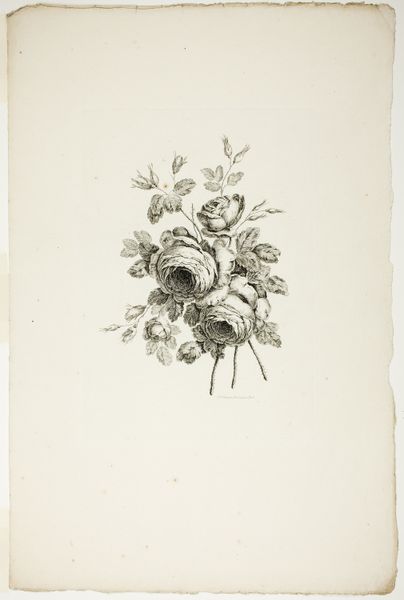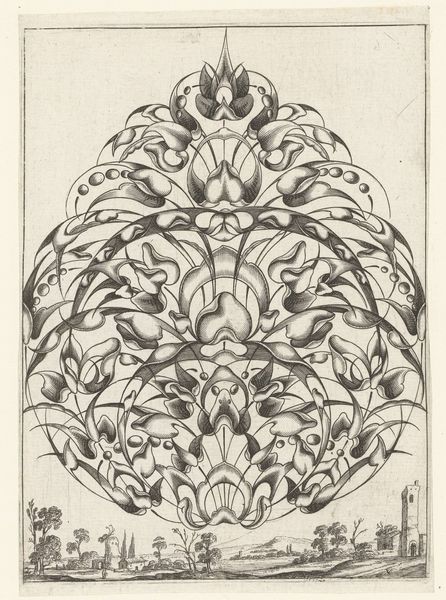
drawing, carving, print, relief, pencil
#
drawing
#
neoclacissism
#
carving
# print
#
relief
#
flower
#
pencil
#
carved
#
watercolour illustration
Dimensions: sheet: 9 3/8 x 7 15/16 in. (23.8 x 20.2 cm)
Copyright: Public Domain
Curator: This meticulous drawing is titled "Design for a Rosette Relief." It comes to us from sometime between 1820 and 1855, though its creator is currently unknown. Editor: The soft grey hues and the central flower-like form give it a strangely calming presence, almost like staring into a botanical mandala. I'm immediately drawn to the play of light and shadow that defines the three-dimensionality of the floral design. Curator: Precisely! The anonymous artist uses pencil, print, and watercolour to bring forth Neoclassical design sensibilities. Consider the socio-political backdrop: the period's obsession with order and reason reflected in this design intended, one imagines, for carved relief, very likely for a monument or architectural flourish. Editor: Rosettes, of course, are timeless. Think of ancient Rome—ornate symbols for power and divine authority but the arrangement also resembles those of a celestial body. A connection, perhaps, between earthly authority and the heavens. It has been like that across history, as different figures used to evoke political ideas with them. Curator: Good point, you're seeing that too; the imagery isn't accidental. The use of botanical elements within a context of political architecture is a fascinating interplay, signaling not just power, but notions of natural order as inherently intertwined with a ruler's legitimacy. Editor: And there is an element of transience, too. Flowers, no matter how beautifully represented, ultimately fade. Does this speak to a similar inevitable decline of even the most powerful empires? Curator: A poignant thought. Ultimately, without further historical details about this design, our interpretations become speculative, engaging with broader historical trends around authority, power, and their visual representation. Editor: And it is in those dialogues, drawing together both social narratives and iconic understanding that an older work continues to engage. We give meaning to this floral rosette when it is interpreted in our current framework, creating unique interactions. Curator: Indeed, it prompts us to critically engage with what symbols represented in the past versus the different meanings in our own complex sociopolitical contexts of the present day.
Comments
No comments
Be the first to comment and join the conversation on the ultimate creative platform.
